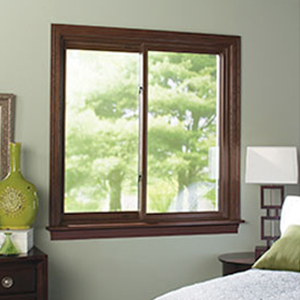Condensation is a sure sign that your home windows should be changed.
Windows are a crucial obstacle in between the extreme, variable weather conditions outside and our calmness, regular residence temperature levels. Home replacement windows quite often have a fifteen to twenty-year life expectancy, so thankfully we don't have to think of replacing them too often. Yet understanding when it's time to replace them can be tricky. You could be tempted to try and hold out for another season if you recognize the warning signs. But changing your home windows now can aid you expand the life of your whole residence as well as keep you as well as your household warm all winter months long. Here are a few indications that your home windows are not prepared for the severe wintertime this year.
Drafty Home
As windows age, they start diminishing, damaging, as well as not closing properly, permitting air from inside your home to flow out. As a result of this, your A/C system battles to keep your house at a constant temperature and sends your power expenses escalating. If your home is visibly extra drafty or your electric expenses seem to be rising this fall for no apparent factor, you might intend to have your windows had a look at.
Challenging to Lock
We enjoy having our windows open when the weather is nice, yet they shouldn't be open all the moment. During the winter months and when we're not home, your home windows should be shut in location and also secured. Windows with malfunctioning locks is a major safety and security risk that must be corrected as soon as possible to maintain your household secure. Commonly the lock can be fixed inexpensively, yet if the home window is having difficulty staying open or shut or is leaking air, it might be best to just set up a brand-new one.
Condensation Forming
The most significant indicator that you require new windows is when condensation starts to base on the within your home window when it is shut and locked. This is a measure of a likely incurable problem and also must be resolved as soon as possible to prevent the prospective development of mold in the framework, which can spread to various other areas of your house and trigger severe damage when left neglected.
Have you practically had it with your old, drafty home windows?
Is this the year you've chosen to lastly replace your windows? Changing your windows with brand-new ones comes with lots of advantages, including an energy efficiency increase, better ventilation, and also far better quality of light in your house. The National Window Ranking Council accredits as well as labels windows (as well as doors as well as skylights) on their performance and energy efficiency. When you're purchasing new windows you'll see these rankings on the NFRC tag. In this week's blog site, we'll speak about ways to read this label to make certain you're making an educated choice on your new home windows.
Warmth Gain and Loss
The initial three residential properties on the tag concern exactly how the window performs with regard to warm gain and also loss. Windows gain and lose heat in three methods:
Direct conduction via the glass.
Radiation of warm from the sunlight right into the house, and outdoors from items in your home.
Air leak with as well as around the home window.
U-factor
This is "The rate at which a home window, door, or skylight carries out non-solar warm circulation." The takeaway below is "The lower the U-factor, the more energy-efficient the home window, door, or skylight."

Solar Warm Gain Coefficient
The SHGC tells us how much radiation is confessed through the home window as well as released as warmth in the house. The lower the number, the less heat is transferred. Nonetheless, this does not always imply you desire a low SHGC. For example, since a higher SGHC suggests the home window allows much more warmth in, you could allow much more solar warmth inside in the winter, which could minimize your home heating requirements. In this case, the environment you stay in will certainly play a major factor in selecting an SHGC rating.
Air Leakage
This quantifies how much air the window allows about a particular stress distinction throughout it. The lower the score, the less air leakage.
Sunlight Passage
The next 2 rankings gauge how much light a home window lets into your house.
Visible Passage (VT).
This number in between 0 and 1 steps what fraction of the spectrum of visible light the window lets through. The higher the fraction, the extra light the home window will enable. If you intend to employ daylighting in your house, you'll desire a higher portion. If you want to lower Buresh Home Solutions interior glow, you might desire a lower fraction.
Light-to-Solar Gain.
This number is the proportion in between the SHGC and also the VT. "The greater the number, the extra light transferred without including too much quantities of heat.".